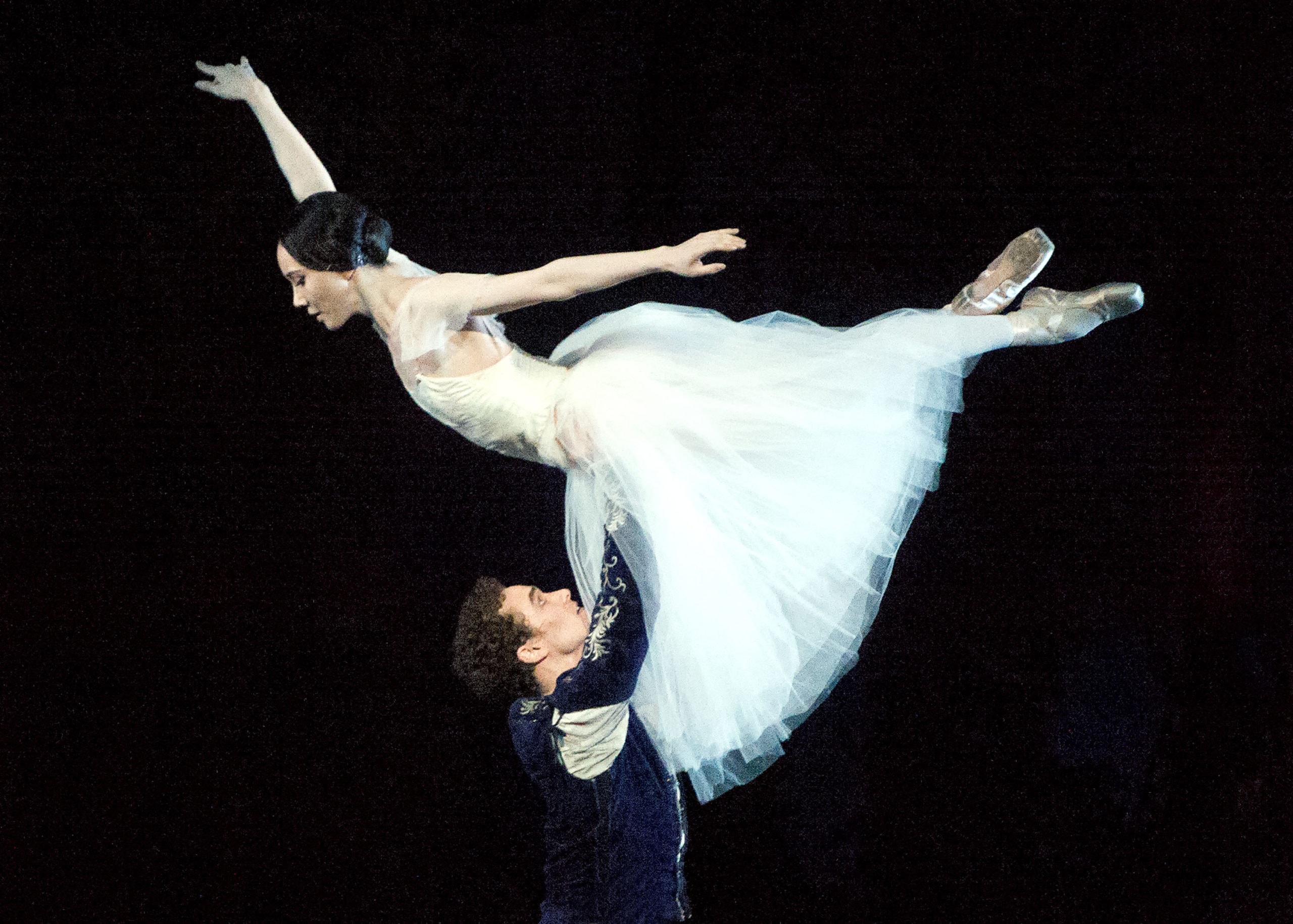After almost two centuries of gracing the ballet world, American Ballet Theatre’s Giselle, sometimes called the Hamlet of ballet, still has the redemptive power to transform a story of deception and tragedy into a supernatural experience of love and forgiveness.

The achingly beautiful Giselle, now onstage for a weeklong run at the Kennedy Center, journeys into the mystical spirit world where peasants and noblemen affirm the lasting nature of moral courage and the eternality of romantic love.
Giselle has undergone several iterations since it first premiered in 1841 in Paris. The Ballet Russe’s 1910 interpretation anchors Giselle as the oldest continually-performed ballet in the world and one that all major ballet companies include in their repertoire.
American Ballet Theatre has been performing Giselle since 1940 in testament to the genius of Jean Coralli, Jules Perrot and Marius Petipa’s choreography with Adolphe Adams’ enchanting musical score. Giselle is a perfect platform for highlighting the company’s superb dramatic expressiveness and superlative technical excellence.
Kevin McKenzie’s Old World staging of Giselle perfectly showcases the exquisite perfection of the ABT’s capacity to perform one of ballet’s most enduring dance classics. American Ballet Theatre has truly earned its 2006 congressional designation as America’s National Ballet Company.
Act I takes place in a Rhineland vineyard right before the fall harvest and the movement reflects dance combined with mime to tell the story of a disguised noblemen, Prince Albrecht, who woos Giselle, a village peasant girl.
Hee Seo, who danced the role of Giselle on opening night, performed with the dramatic passion and the palpable sensitivity of a young girl in love that belied her great inner strength. No wilting flower is Seo’s Giselle, particularly when she dances with mad delirium upon discovering that the deceptive Albrecht is already engaged to Prince Courland’s daughter, Bathilde.
Seo’s emotional depth and range in dance/mime prove a powerful ending to the first act as the curtain closes upon the supine Giselle who expires from a broken heart.
Cory Stearns is nobly confident in his stark deception of the unknowing Giselle and dances the role of Prince Albrecht with the power and precision that might be expected of royalty.
The Peasant Pas de Deux in Act I, danced with great alacrity by Luciana Paris and Gabe Stone Shayer, is a section of Giselle that doesn’t convey movement to the story, but lends great energy to the village scene as the pair dance before the Court Ladies and Gentleman that visit Giselle’s village during a royal hunt.
The choreography of Giselle is simple, but requires great precision to express its depth and elegance fully. Some of Giselle’s most well-known dance steps convey the love and joy made audible through the light and lovely melodies of Adolphe Adam’s musical score. Harp and violin solos frequently pierce the atmosphere with romantic intimations under Ormsby Wilkins’ dynamic musical conducting.
Signature footwork in Giselle expresses in repeated poses through extended arabesques and long-held attitudes. Gliding steps flick the leg and ankle in elegant grand rond de jambes while hopping on the other foot followed by rapid pique turns. Male dancers triumphantly repeat difficult leaping steps through double cabriolets and grand jetes that fill the stage and use every bar of music with dramatic flair.

The supernatural world of departed souls opens Act II in a darkly-lit cemetery of a forest inhabited by the Wilis, spirits of jilted betrothed young women that roam the countryside at night. Under the vengeful authority of Myrte, Queen of the Wilis, they entrap any man in their domain and dance them to death in an act of revenge. They attempt to initiate Giselle into their spirit-world sisterhood.
The smoky darkness and lightning-strike background masterfully created by Jennifer Tipton’s lighting starkly changes the atmospherics from the joyous first act that ends in despair to the graveyard stillness of the second act, the abode of the Wilis.
One of the most breathtaking moments of Giselle is Myrte’s opening solo entrance in Act II, danced with striking impact by Devon Teuscher and the famous floating bourree steps in which Teuscher glides across the stage as if on wheels.
Dressed in white bridal face-covering veils and tulle skirts designed by Anna Anni, a group of 18 Wilis follow in mystical movements of veiled terror. Gianni Quaranta’s foreboding scenery in Act II completes a picture of what awaits any man that dares to become entrapped by the vampirish Wilis.
“True love never dies” is an aphorism that lifts the ballet’s tender ending to higher ground through its undying message about the power of love and forgiveness.
ABT’s principal dancers will fulfill the roles of Giselle and Prince Albrecht and Myrte over the program run, including: Stella Abrera, Isabella Boylston, Misty Copeland, Herman Cornejo, Sarah Lane, Gillian Murphy, Hee Seo, Christine Shevchenko, Daniil Simkin, Cory Stearns, Devon Teuscher and James Whiteside.
Running Time: Two hours including a 20-minute intermission
The American Ballet Theatre’s Giselle performs through Sunday, February 16, 2020, at The Kennedy Center’s Opera House – 2700 F Street, NW, Washington, DC. For tickets, call the box office at (202) 467-4600 or (800) 444-1324, or purchase them online.




